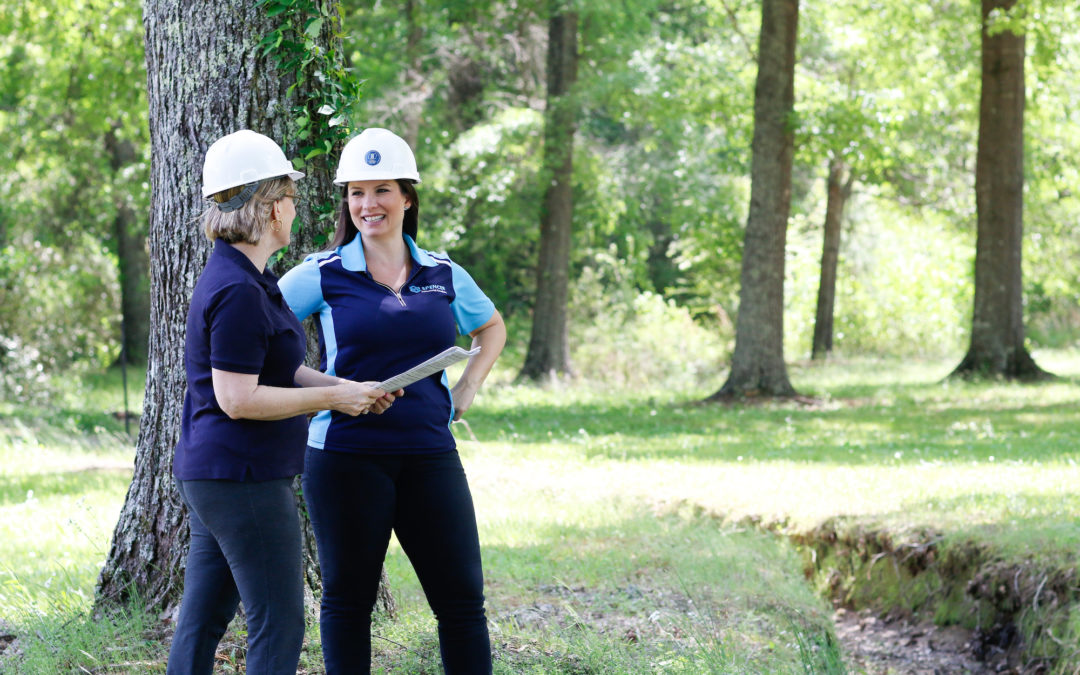Phase I investigations, commonly referred to as Environmental Site Assessments (ESAs), identify potential or existing environmental contamination liabilities of a property in a real estate transaction. This investigation will assess the current and historical uses of a property and if any of the past uses have impacted soil or groundwater beneath the property. If issues are found, it presents a potential liability for the lender or owner and can affect the value of a property. A Phase I completed prior to closing a real estate transaction can be used to satisfy the requirements of CERCLA’s innocent landowner defense under All Appropriate Inquiries Act (AAI).
Phase I ESA’s can be completed on various types of properties including vacant land, agricultural, multi-family residential, commercial, and industrial uses. ALL Phase I ESA’s must comply with ASTM E1527-13. Exceptions are made for properties comprised of large primarily undeveloped land, which can be researched under ASTM E2247-16. ASTM E1527-13 provides the guidelines for a Phase I ESA report to meet industry standards, but there are other factors to consider when ordering a report. Projects associated with U.S. Department of Housing and Urban Development (HUD), and the Small Business Association (SBA) each have their own report requirements.
A Phase I ESA typically includes the following:
- A site visit to observe current and past conditions and uses of the property and adjacent properties;
- A review of federal, state, tribal, and local regulatory databases;
- A review of historical records, such as historical aerial photographs, fire insurance maps, historical city directories, and historical topographic maps;
- A review of state and local agency records, including but not limited to state environmental agencies, Building Departments, Fire Departments, and Health Departments;
- Interviews with current and past property owners, operators, and occupants, or others familiar with the property;
- Interviews with the Report User for title or judicial records for environmental liens and activity and use limitations (AULs); specialized knowledge or experience; actual knowledge; commonly known or reasonably ascertainable information; the reason for a significantly lower purchase price; and the reason for the preparation of the Phase I ESA.
The findings from a Phase I ESA are evaluated by an Environmental Professional to identify environmental risks to the property including current or previous uses of the property that are suspected to have used hazardous substances. Common concerns include dry cleaners, gas stations, vehicle repair, printing operations, and manufacturing. Though not required by ASTM, further investigations include asbestos containing materials, potential lead-based paint, mold growth, radon, and the potential for lead in drinking water.
Once the Phase I ESA is complete, the Environmental Professional will summarize the identified concerns and make recommendations of what actions are needed to address these matters. A recognized environmental condition (REC) demonstrates there is a known contaminant or potential for the subsurface to have been impacted by contamination from previous uses or from an offsite source.
A controlled recognized environmental condition (CREC) indicates the property has been contaminated, but this has been investigated and remediated, but contamination remains and would require further work if redeveloped. An historically recognized environmental condition (HREC) identifies a release that has impacted the property and it is being investigated and remediated to meet the unrestricted criteria. If a REC is identified, usually a Phase II ESA will be conducted by collecting soil, groundwater, and soil vapor samples from the subsurface to determine the level of contamination.
If you are interested in purchasing property and need a Phase I ESA, our team of engineers are ready to assist you. Contact us today for a consultation!

